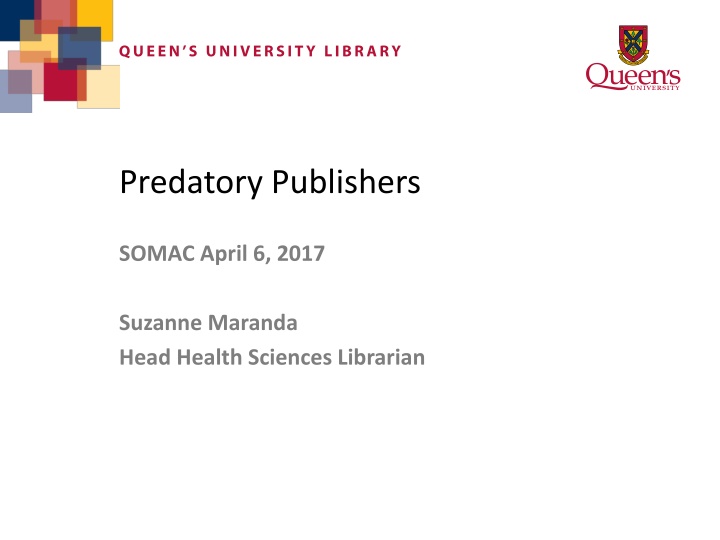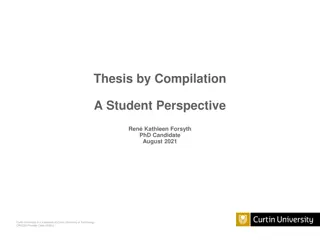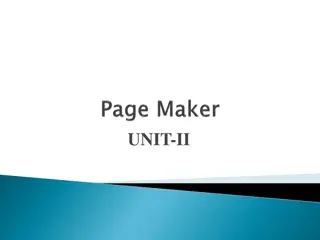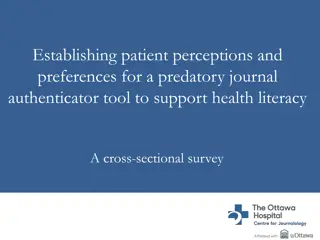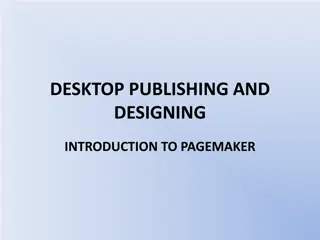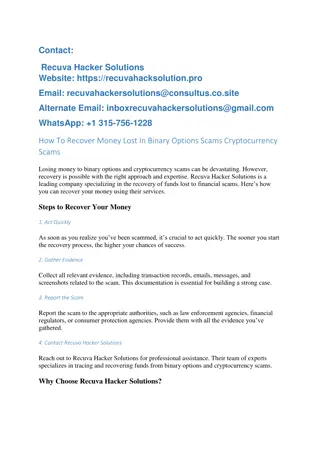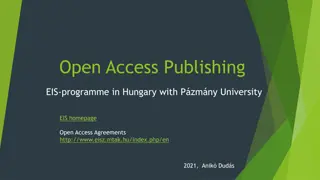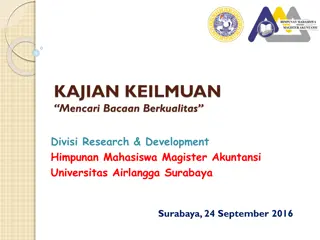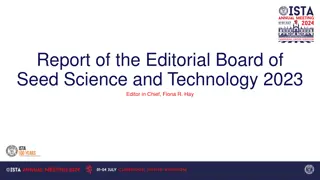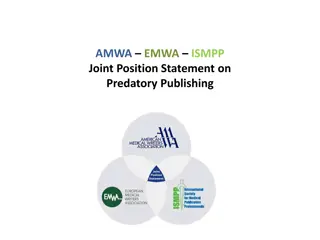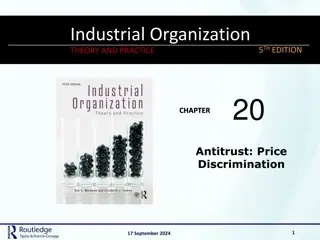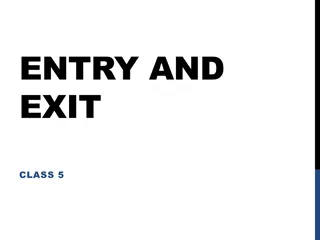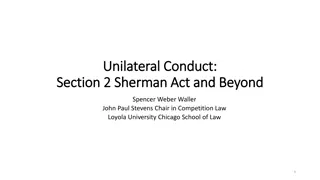Recognizing Predatory Publishing Practices
Predatory publishing practices involve deceptive tactics like false impact factors, fake conferences, and unauthorized use of editorial board names. Authors are warned against submitting to such journals due to lack of credibility and ethical concerns. The article also highlights the importance of being cautious when choosing journals for publication and provides resources for evaluation.
Uploaded on Mar 04, 2025 | 0 Views
Download Presentation

Please find below an Image/Link to download the presentation.
The content on the website is provided AS IS for your information and personal use only. It may not be sold, licensed, or shared on other websites without obtaining consent from the author.If you encounter any issues during the download, it is possible that the publisher has removed the file from their server.
You are allowed to download the files provided on this website for personal or commercial use, subject to the condition that they are used lawfully. All files are the property of their respective owners.
The content on the website is provided AS IS for your information and personal use only. It may not be sold, licensed, or shared on other websites without obtaining consent from the author.
E N D
Presentation Transcript
Predatory Publishers SOMAC April 6, 2017 Suzanne Maranda Head Health Sciences Librarian
Do you recognize these titles? Journal of Preventive Medicine International Journal of Environmental Research and Public Health Archives of Medicine Internal Medicine Review Preventive Medicine International Journal of Public Health Archives of Internal Medicine Internal Medicine Journal
Publishing practices In 2014 publishers launched 1000 new journals In 2014, 420,000 articles published in predatory journals The larger predatory publishers purchase legitimate journals or smaller publishers Some have recently cancelled contracts with OMICS: Can J Gen Int Med Can J Optometry
Objectionable practices Use names on editorial boards without consent or change names on photos (see Ottawa Citizen link) Invitations to fake conferences Become members of legitimate organizations such as COPE (Committee on Publication Ethics) Easily get an ISSN or a fake impact factor
Authors beware Beall s Black list has been removed from the Internet White lists are not reliable: Anyone can submit articles to PubMed University libraries purchase journals in bulk Predatory journals lie about impact factors They lie about being indexed in Medline/Pubmed If you try to retract, they will publish anyway and require payment. Helpful website: thinkchecksubmit.org
Why does it matter? I just ignore any unsolicited requests to publish BUT: As co-author, do you know the journal chosen by the PI? Are you checking references for a faculty position or for a conference keynote speaker? Are you helping graduate students choose a journal to publish their work? Are you able to evaluate such papers when you are reading? Contact: bracken.library@queensu.ca
More information Gillis, A. Academics beware. University Affairs. 2017;58 (2):19- 27. Shen C, Bjork BC. 'Predatory' open access: a longitudinal study of article volumes and market characteristics. BMC Med [Internet]. 2015;13:230. QUL guide: Http://guides.library.queensu.ca/predatory-publications Ottawa Citizen article: http://ottawacitizen.com/technology/science/the-editor-is-late- fake-science-journals-hit-new-low
